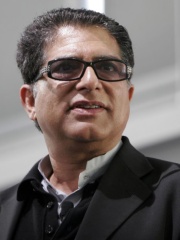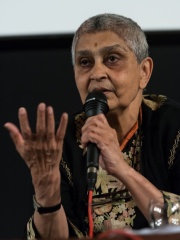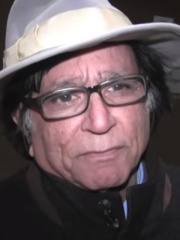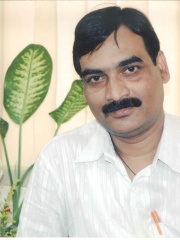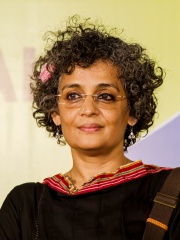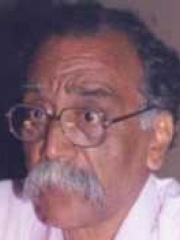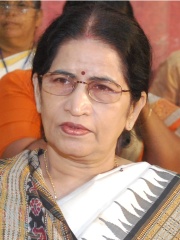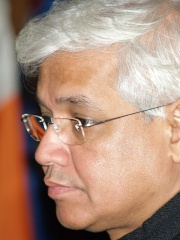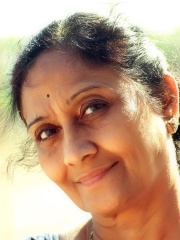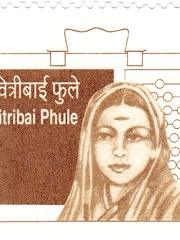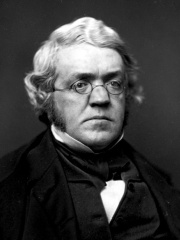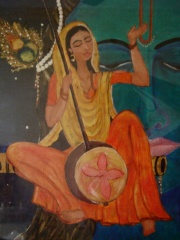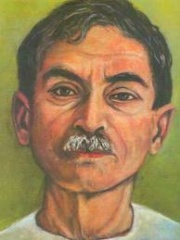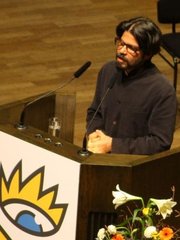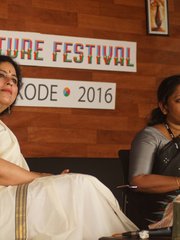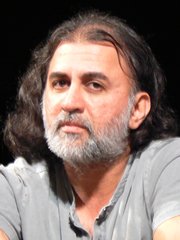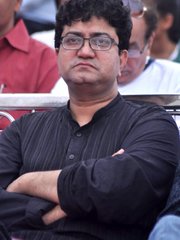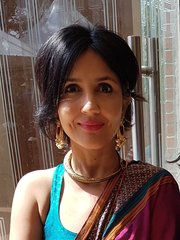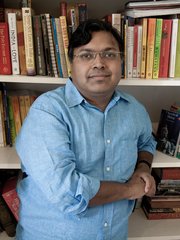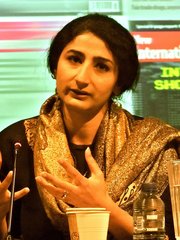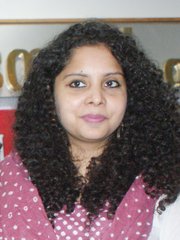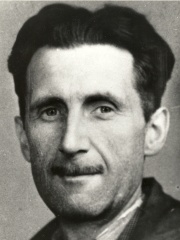
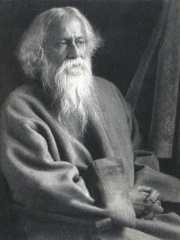
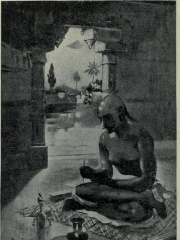
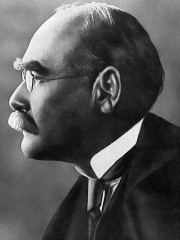
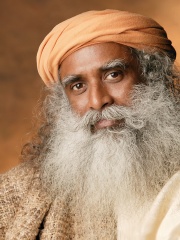
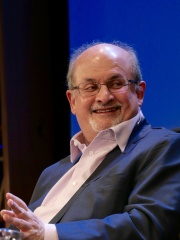
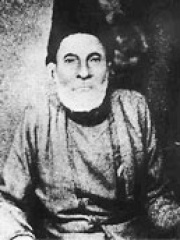
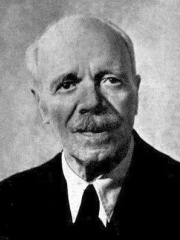
The Most Famous
WRITERS from India
Top 10
The following people are considered by Pantheon to be the top 10 most legendary Indian Writers of all time. This list of famous Indian Writers is sorted by HPI (Historical Popularity Index), a metric that aggregates information on a biography's online popularity. Visit the rankings page to view the entire list of Indian Writers.

1. George Orwell (1903 - 1950)
With an HPI of 85.28, George Orwell is the most famous Indian Writer. His biography has been translated into 145 different languages on wikipedia.
Eric Arthur Blair (25 June 1903 – 21 January 1950) was an English novelist, poet, essayist, journalist, and critic who wrote under the pen name of George Orwell. His work is characterised by lucid prose, social criticism, opposition to all totalitarianism (both authoritarian communism and fascism), and support of democratic socialism. Orwell is best known for his allegorical novella Animal Farm (1945) and the dystopian novel Nineteen Eighty-Four (1949), although his works also encompass literary criticism, poetry, fiction and polemical journalism. His non-fiction works, including The Road to Wigan Pier (1937), documenting his experience of working-class life in industrial Northern England, and Homage to Catalonia (1938), an account of his experiences soldiering for the Republican faction of the Spanish Civil War (1936–1939), are as critically respected as his essays on politics, literature, language and culture. Orwell's work remains influential in popular culture and in political culture, and the adjective "Orwellian"—describing totalitarian and authoritarian social practices—is part of the English language, like many of his neologisms, such as "Big Brother", "Thought Police", "Room 101", "Newspeak", "memory hole", "doublethink", and "thoughtcrime". In 2008, The Times named Orwell the second-greatest British writer since 1945.

2. Rabindranath Tagore (1861 - 1941)
With an HPI of 83.47, Rabindranath Tagore is the 2nd most famous Indian Writer. His biography has been translated into 164 different languages.
Rabindranath Thakur (Bengali: [roˈbindɾonatʰ ˈʈʰakuɾ]; anglicised as Rabindranath Tagore ; 7 May 1861 – 7 August 1941), also known by his pseudonym Bhanusimha (Sun Lion) was a Bengali polymath (poet, writer, playwright, composer, philosopher, social reformer, and painter) of the Bengal Renaissance period. In 1913, Tagore became the second non-European to win a Nobel Prize in any category, and also the first lyricist to win the Nobel Prize in Literature. He has written the national anthems of India and Bangladesh. He reshaped Bengali literature and music as well as Indian art with Contextual Modernism in the late 19th and early 20th centuries. He was the author of the "profoundly sensitive, fresh and beautiful" poetry of Gitanjali. Tagore's poetic songs were viewed as spiritual and mercurial; his elegant prose and magical poetry were widely popular in the Indian subcontinent. He was a fellow of the Royal Asiatic Society. Referred to as "the Bard of Bengal", Tagore was known by the sobriquets Gurudev, Kobiguru, and Biswokobi. A Bengali Brahmin from Calcutta with ancestral gentry roots in Jessore and Bardhaman districts, Tagore wrote poetry as an eight-year-old. At the age of sixteen, he released his first substantial poems under the pseudonym Bhānusiṃha ("Sun Lion"), which were seized upon by literary authorities as long-lost classics. By 1877 he graduated to his first short stories and dramas, published under his real name. As a humanist, universalist, internationalist, and ardent critic of nationalism, he denounced the British Raj and advocated independence from Britain. As an exponent of the Bengal Renaissance, he advanced a vast canon that comprised paintings, sketches and doodles, hundreds of texts, and some two thousand songs; his legacy also endures in his founding of Visva-Bharati University. Tagore modernised Bengali art by spurning rigid classical forms and resisting linguistic strictures. His novels, stories, songs, dance dramas, and essays spoke to topics political and personal. Gitanjali (Song Offerings), Gora (Fair-Faced), and Ghare-Baire (The Home and the World) are his best-known works. His poetry, short stories, and novels were both praised and criticised for their lyricism, colloquial tone, naturalism, and philosophical introspection. His compositions were chosen by two nations as national anthems: India's "Jana Gana Mana" and Bangladesh's "Amar Shonar Bangla". The Sri Lankan national anthem was also inspired by his work. His song "Banglar Mati Banglar Jol" has been adopted as the state anthem of West Bengal.

3. Kālidāsa (400 - 420)
With an HPI of 82.51, Kālidāsa is the 3rd most famous Indian Writer. His biography has been translated into 137 different languages.
Kālidāsa (Sanskrit: कालिदास, "Servant of Kali"; 4th–5th century CE) was a Classical Sanskrit author who is often considered ancient India's greatest poet and playwright. His plays and poetry are primarily based on Hindu Puranas and philosophy. His surviving works consist of three plays, two epic poems and two shorter poems. Much about his life is unknown except what can be inferred from his poetry and plays. His works cannot be dated with precision, but they were most likely authored before the 5th century CE during the Gupta era. Kalidas is mentioned as one of the seven Brahma avatars in Dasam Granth, written by Guru Gobind Singh.

4. Rudyard Kipling (1865 - 1936)
With an HPI of 79.04, Rudyard Kipling is the 4th most famous Indian Writer. His biography has been translated into 121 different languages.
Joseph Rudyard Kipling ( RUD-yərd; 30 December 1865 – 18 January 1936) was an English journalist, novelist, poet and short-story writer. He was born in British India, which inspired much of his work. Kipling's works of fiction include the Jungle Book duology (The Jungle Book, 1894; The Second Jungle Book, 1895), Kim (1901), the Just So Stories (1902) and many short stories, including "The Man Who Would Be King" (1888). His poems include "Mandalay" (1890), "Gunga Din" (1890), "The Gods of the Copybook Headings" (1919), "The White Man's Burden" (1899) and "If—" (1910). He is seen as an innovator in the art of the short story. His children's books are classics; one critic noted "a versatile and luminous narrative gift". Kipling in the late 19th and early 20th centuries was among the United Kingdom's most popular writers. Henry James said "Kipling strikes me personally as the most complete man of genius, as distinct from fine intelligence, that I have ever known." In 1907, he was awarded the Nobel Prize in Literature, as the first English-language writer to receive the prize, and at 41, its youngest recipient to date. He was also sounded out for the British Poet Laureateship and several times for a knighthood, but declined both. Following his death in 1936, his ashes were interred at Poets' Corner in Westminster Abbey. Kipling's subsequent reputation has changed with the political and social climate of the age. The contrasting views of him continued for much of the 20th century. The literary critic Douglas Kerr wrote that Kipling "is still an author who can inspire passionate disagreement and his place in literary and cultural history is far from settled. But as the age of the European empires recedes, he is recognised as an incomparable, if controversial, interpreter of how empire was experienced. That, and an increasing recognition of his extraordinary narrative gifts, make him a force to be reckoned with."
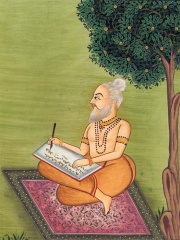
5. Valmiki (80 BC - 2 BC)
With an HPI of 76.21, Valmiki is the 5th most famous Indian Writer. His biography has been translated into 61 different languages.
Valmiki (; Sanskrit: वाल्मीकि, romanized: Vālmīki, [ʋɑːlmiːki]) was a legendary poet who is celebrated as the traditional author of the epic Ramayana, based on the attribution in the text itself. He is revered as Ādi Kavi, the first poet, author of Ramayana, the first epic poem. The Ramayana, originally written by Valmiki, consists of 24,000 shlokas and seven cantos (kaṇḍas). The Ramayana is composed of about 480,002 words, being a quarter of the length of the full text of the Mahabharata or about four times the length of the Iliad. The Ramayana tells the story of a prince, Rama of the city of Ayodhya in the Kingdom of Kosala, whose wife Sita is abducted by Ravana, the demon-king (Rakshasa) of Lanka. The scholars' estimates for the earliest stage of the text ranging from the 8th to 4th centuries BCE, and later stages extending up to the 3rd century CE, although original date of composition is unknown. As with many traditional epics, it has gone through a process of interpolations and redactions, making it impossible to date accurately. British satirist Aubrey Menen says that Valmiki was "recognized as a literary genius," and thus was considered, "an outlaw," presumably because of his "philosophic scepticism," as part of an "Indian Enlightenment" period. Valmiki is also quoted as being the contemporary of Rama. Menen claims Valmiki is "the first author in all history to bring himself into his own composition."

6. Jaggi Vasudev (b. 1957)
With an HPI of 75.17, Jaggi Vasudev is the 6th most famous Indian Writer. His biography has been translated into 47 different languages.
Jagadish "Jaggi" Vasudev (born 3 September 1957), also known as Sadhguru, is an Indian guru and founder of the Isha Foundation, based in Coimbatore, India. The foundation, established in 1992, operates an ashram and yoga centre that carries out educational and spiritual activities. Sadhguru has been teaching yoga since 1982. He is the author of the New York Times bestsellers Inner Engineering: A Yogi's Guide to Joy and Karma: A Yogi's Guide to Crafting Your Destiny, and a frequent speaker at international forums. Sadhguru also advocates for protecting the environment against climate change, leading many initiatives like Project GreenHands (PGH), Rally for Rivers, Cauvery Calling, and the Journey to Save Soil. In 2017, he received the Padma Vibhushan, India's second-highest civilian award, for his contributions to spirituality and humanitarian services. Sadhguru has been criticised for promoting a number of pseudoscientific claims.

7. Salman Rushdie (b. 1947)
With an HPI of 74.40, Salman Rushdie is the 7th most famous Indian Writer. His biography has been translated into 98 different languages.
Sir Ahmed Salman Rushdie (born 19 June 1947) is an Indian-born British and American novelist. His work often combines magical realism with historical fiction and primarily deals with connections, disruptions, and migrations between Eastern and Western civilizations, typically set on the Indian subcontinent. Rushdie's second novel, Midnight's Children (1981), won the Booker Prize in 1981 and was deemed to be "the best novel of all winners" on two occasions, marking the 25th and the 40th anniversary of the prize. After his fourth novel, The Satanic Verses (1988), Rushdie became the subject of several assassination attempts and death threats because of what was seen by some to be an irreverent depiction of Muhammad. This included a fatwa calling for his death issued by Ruhollah Khomeini, the supreme leader of Iran. The book was banned in 20 countries. Numerous killings and bombings have been carried out by extremists who cited the book as motivation, sparking a debate about censorship and religiously motivated violence. In 2022, Rushdie survived a stabbing at the Chautauqua Institution that led to loss of his right eye and damage to his liver and hands. Rushdie was educated at King's College at the University of Cambridge, where he graduated with a degree in history in 1968. In 1983, Rushdie was elected a fellow of the Royal Society of Literature. He was appointed a Commandeur de l'Ordre des Arts et des Lettres of France in 1999. Rushdie was knighted in 2007 for his services to literature. In 2008, The Times ranked him 13th on its list of the 50 greatest British writers since 1945. Since 2000, he has lived in the United States. Rushdie was named Distinguished Writer in Residence at the Arthur L. Carter Journalism Institute of New York University in 2015. Earlier, he taught at Emory University. He was elected to the American Academy of Arts and Letters. In 2012, Rushdie published Joseph Anton: A Memoir, an account of his life in the wake of the events following The Satanic Verses. He was named one of the 100 most influential people in the world by Time magazine in April 2023. Rushdie has been married five times. From 2004 to 2007, he was married to Indian-American television presenter and model Padma Lakshmi.

8. Ghalib (1797 - 1869)
With an HPI of 74.00, Ghalib is the 8th most famous Indian Writer. His biography has been translated into 68 different languages.
Mirza Asadullah Beg Khan (27 December 1797 – 15 February 1869), commonly known as Mirza Ghalib, was an Indian poet and letter writer of the Mughal Empire. Writing in Persian and Urdu during the final years of the Mughal Empire and the rise of British colonial rule, his poetry often addressed themes of love, loss, philosophy, the human condition, and socio-political disturbances with a depth and complexity that influenced the literary traditions of his time. His ghazals, noted for their intricate imagery and layered meanings, form a significant part of Urdu literature. He spent most of his life in poverty. He wrote in both Urdu and Persian. Although his Persian Divan (body of work) is at least five times longer than his Urdu Divan, his fame rests on his poetry in Urdu. Today, Ghalib remains popular not only in South Asia, but also among the South Asian diaspora.

9. Jim Corbett (1875 - 1955)
With an HPI of 73.39, Jim Corbett is the 9th most famous Indian Writer. His biography has been translated into 36 different languages.
Edward James Corbett (25 July 1875 – 19 April 1955) was an Anglo-Indian hunter and author. He gained fame through hunting and killing several man-eating tigers and leopards in Northern India, as detailed in his bestselling 1944 memoir Man-Eaters of Kumaon. In his later years, he became an outspoken advocate of the nascent conservation movement. Born in Naini Tal, Corbett explored and hunted in the jungles of India in childhood. He shot his first man-eater in 1907 and continued to hunt and kill such animals over the next four decades. Animals such as the Champawat Tiger, the Leopard of Rudraprayag, and the Panar Leopard had taken hundreds of victims in the divisions of Kumaon and Garhwal, before their deaths at Corbett's hands. Man-Eaters of Kumaon, which detailed several such hunts, became an international bestseller; it was followed by several other books and was adapted into a 1948 Hollywood film. Corbett increasingly disdained what he saw as the rapacious extermination of India's forests and wildlife, and fervently promoted wildlife photography as an alternative to trophy hunting. He played a major role in the creation of India's first wildlife reserve in 1934; it was renamed Jim Corbett National Park after his death. The Indochinese tiger subspecies received the scientific name Panthera tigris corbetti in his honour. For many years, Corbett earned a living working for the railway companies, and for twenty-two years supervised the transport of goods across the Ganges at Mokameh Ghat. During the First World War, he recruited a labour corps and commanded them on the Western Front; he also supervised the logistics of the Third Anglo-Afghan War in 1919. Returning to his home town during the interwar period, he became a prominent local landowner and businessman who also organised hunts for the elite of British India, including the then-Governor-General Lord Linlithgow, who became a close friend. Corbett served as an instructor in jungle survival for troops of the Burma Campaign during the Second World War. Dismayed by the febrile atmosphere surrounding the Indian independence movement, he emigrated to Kenya in 1947, and died in Nyeri eight years later.
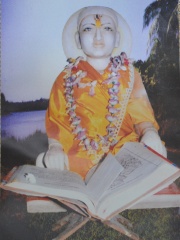
10. Tulsidas (1532 - 1623)
With an HPI of 73.16, Tulsidas is the 10th most famous Indian Writer. His biography has been translated into 59 different languages.
Rambola Dubey (Hindi pronunciation: [rɑːməboːlɑː d̪ubeː]; 11 August 1511 – 30 July 1623), popularly known as Goswami Tulsīdās (Sanskrit pronunciation: [tʊlsiːdaːsa]), was a Vaishnava (Ramanandi) Hindu saint, devotee (भक्त) and poet, renowned for his devotion to the deity Rama. He wrote several popular works in Sanskrit, Awadhi, and Braj Bhasha, but is best known as the author of the Hanuman Chalisa and of the epic Ramcharitmanas, a retelling of the Sanskrit Ramayana, based on Rama's life, in the vernacular Awadhi language. Tulsidas spent most of his life in the cities of Banaras (modern Varanasi) and Ayodhya. The Tulsi Ghat on the Ganges in Varanasi is named after him. He founded the Sankat Mochan Hanuman Temple in Varanasi, believed to stand at the place where he had the sight of the deity. Tulsidas started the Ramlila plays, a folk-theatre adaptation of the Ramayana. He has been acclaimed as one of the greatest poets in Hindi, Indian, and world literature. The impact of Tulsidas and his works on the art, culture, and society in India is widespread and is seen today in the vernacular language, Ramlila plays, Hindustani classical music, popular music, and television series.
People
Pantheon has 171 people classified as Indian writers born between 1000 BC and 2000. Of these 171, 54 (31.58%) of them are still alive today. The most famous living Indian writers include Jaggi Vasudev, Salman Rushdie, and Deepak Chopra. The most famous deceased Indian writers include George Orwell, Rabindranath Tagore, and Kālidāsa. As of April 2024, 15 new Indian writers have been added to Pantheon including Pankaj Mishra, K. R. Meera, and Rita Chowdhury.
Living Indian Writers
Go to all RankingsJaggi Vasudev
1957 - Present
HPI: 75.17
Salman Rushdie
1947 - Present
HPI: 74.40
Deepak Chopra
1946 - Present
HPI: 65.85
Gayatri Chakravorty Spivak
1942 - Present
HPI: 64.15
Ibn Warraq
1946 - Present
HPI: 60.82
Ravindra Prabhat
1969 - Present
HPI: 59.30
Arundhati Roy
1961 - Present
HPI: 57.96
Bhalchandra Nemade
1938 - Present
HPI: 56.42
Pratibha Ray
1944 - Present
HPI: 56.11
Amitav Ghosh
1956 - Present
HPI: 55.53
Varsha Adalja
1940 - Present
HPI: 54.09
Anita Desai
1937 - Present
HPI: 53.25
Deceased Indian Writers
Go to all RankingsGeorge Orwell
1903 - 1950
HPI: 85.28
Rabindranath Tagore
1861 - 1941
HPI: 83.47
Kālidāsa
400 - 420
HPI: 82.51
Rudyard Kipling
1865 - 1936
HPI: 79.04
Valmiki
80 BC - 2 BC
HPI: 76.21
Ghalib
1797 - 1869
HPI: 74.00
Jim Corbett
1875 - 1955
HPI: 73.39
Tulsidas
1532 - 1623
HPI: 73.16
Savitribai Phule
1831 - 1897
HPI: 73.12
William Makepeace Thackeray
1811 - 1863
HPI: 71.73
Meera
1498 - 1546
HPI: 71.21
Premchand
1880 - 1936
HPI: 70.83
Newly Added Indian Writers (2025)
Go to all RankingsPankaj Mishra
1969 - Present
HPI: 44.44
K. R. Meera
1970 - Present
HPI: 43.13
Rita Chowdhury
1960 - Present
HPI: 41.26
Anuradha Roy
1967 - Present
HPI: 37.54
Tarun Tejpal
1963 - Present
HPI: 35.71
Vikram Chandra
1961 - Present
HPI: 34.73
Prasoon Joshi
1971 - Present
HPI: 32.59
Anuja Chauhan
1970 - Present
HPI: 32.55
Samina Ali
1969 - Present
HPI: 31.79
Devdutt Pattanaik
1970 - Present
HPI: 31.50
Nitasha Kaul
HPI: 28.92
Rana Ayyub
1984 - Present
HPI: 28.85
Overlapping Lives
Which Writers were alive at the same time? This visualization shows the lifespans of the 25 most globally memorable Writers since 1700.

